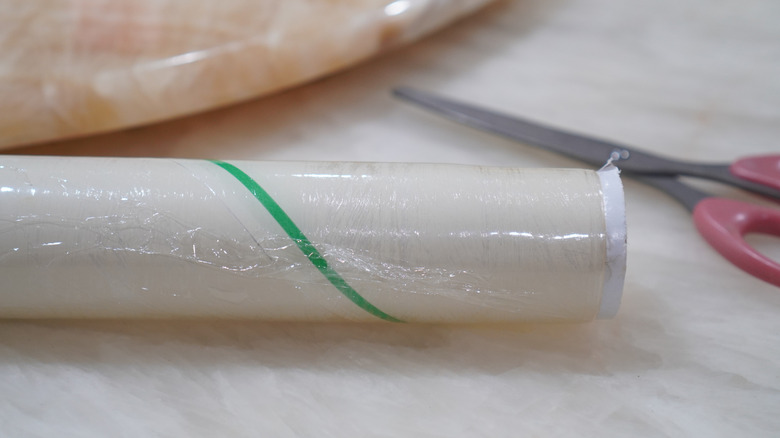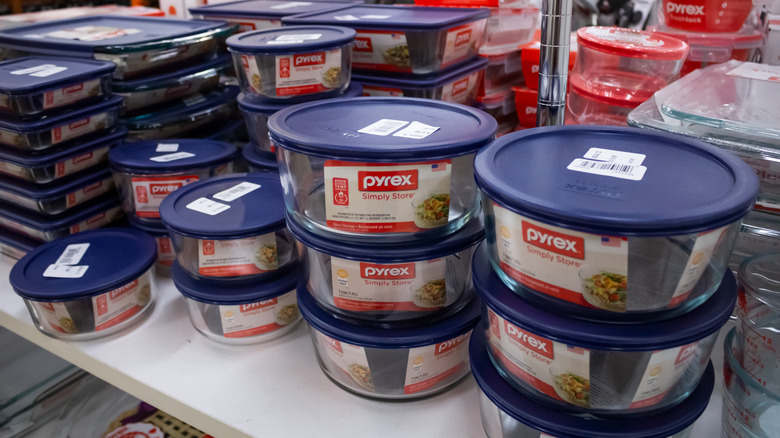Why You Should Throw Out Your Plastic Wrap And The Best Alternatives To Use
We may receive a commission on purchases made from links.
The use of plastic wrap –- found in kitchens everywhere — is being reexamined in light of new research and the increasing health concerns regarding problem chemicals; phthalates, microplastics, and nano plastics. There is no question that plastic wrap has provided benefits to food preservation and sanitation. Storage to keep food fresh longer is a universal problem and the FDA considers plastic wrap to be a safe product. But new studies looking at the chemicals used in plastic wrap and plastic food containers have rung alarm bells, resulting in editorial coverage by national news organizations. One specific study published in eBiostudies, part of The Lancet, identified phthalates to be an important component in plastic wraps and plastic food containers. This was an observational study that made use of many other published findings, in their conclusion, they associated 350,000 deaths worldwide from heart disease from the chemicals in plastic wrap and plastic food containers. Heating food in plastic containers increases the transfer of dangerous chemicals. Microwaving food in a plastic container covered in plastic wrap is the poster child for dangerous chemical exposure during cooking.
Additionally, a study published in the journal Clinical Psychopharmacology and Neuroscience showed that BPA (Bisphenol A) exposure, another common component of plastic wrap and food containers, is possibly linked to poor cognitive outcomes in children and exacerbating behavioral problems in children with ADHD. (However, it should be noted that further studies were needed for definitive evidence.) With those studies in mind, it is only common sense that you should throw your plastic wrap away and look for healthier alternatives to keep your food safe.
Looking for practical alternatives
Ceramic and glass (like Pyrex) containers are safe and can be used for cooking and storage. They are versatile and sturdy. You can often find vintage glass containers at yard and estate sales. Use glass or plastic water bottles and don't use plastic cups. Glass baby bottles are also a safe alternative for storage and heating. Stainless steel food containers are another super safe food storage option. Their one downside is that they are not microwavable, but it is simple enough to transfer the food to a ceramic plate or glass bowl for heating. You should use the same food transfer technique to heat food stored in compostable food storage containers. Most are not recommended for use when heating food in a microwave. One clever and extremely useful alternative to plastic wrap is beeswax food wraps. They are exactly what they sound like. Cotton fabric that has been saturated with beeswax modified with cooking oil to make flexible and reusable wraps to preserve your food. While they can be cleaned and reused, you cannot cook with them. You can purchase beeswax wraps at Amazon, or you can DIY some yourself.
Plastic wrap and plastic containers provide remarkable convenience and help keep our food fresh, but it is up to you to decide if their risks outweigh their benefits. The chemicals in question are undetectable to us in everyday life, but they are real and if you use plastic, the fact is that you are ingesting them.

